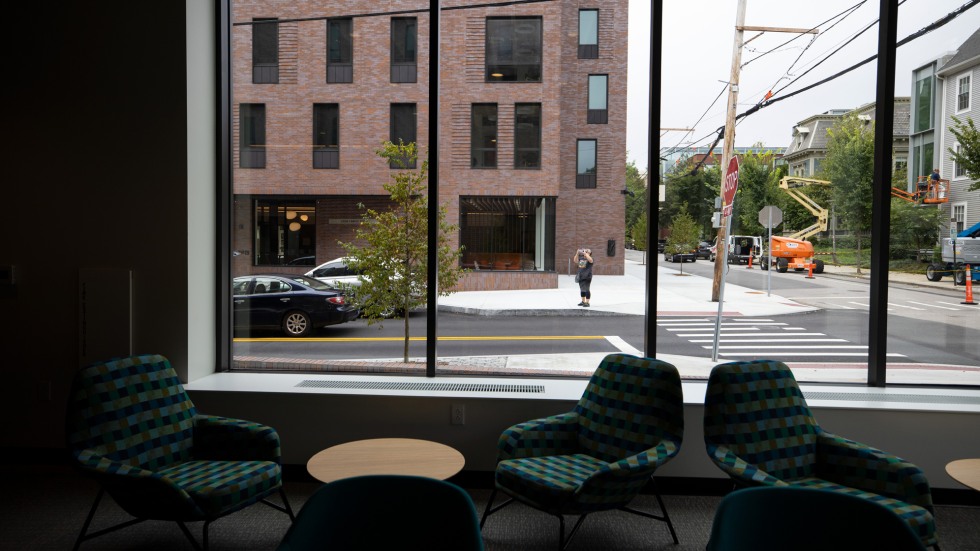PROVIDENCE, R.I. [Brown University] — Years of planning, design and construction culminated in late August, when Brown University’s two newest residence halls welcomed their first student arrivals.
Located at 250 and 259 Brook St. in Providence, respectively, the Chen Family and William and Ami Danoff residence halls will house Brown sophomores, juniors and seniors for the Fall 2023 semester and generations to come — and they were designed with those students’ specific needs in mind.
Approximately 70 students moved in late in August as they arrived a few days early on campus for athletic pre-season training, preparation to serve as Bruno Leaders (orientation volunteers) and for a variety of other reasons. They became the first students to set foot in the state-of-the-art residence halls, which feature suite-style living and a range of shared spaces and amenities that will draw students together and build community.
One of the newest residents is Brown junior Ava Filiss, a public health concentrator, who moved into Chen Family Hall last week to prepare for her role as a Bruno Leader.
“I’m a huge fan of all the flex spaces,” she said. “You can tell there was a real focus on quality and creating spaces where we can work and hang out.”
By the time the remaining students move in over Labor Day weekend, the two halls will be at full capacity, with approximately 350 students living there.




